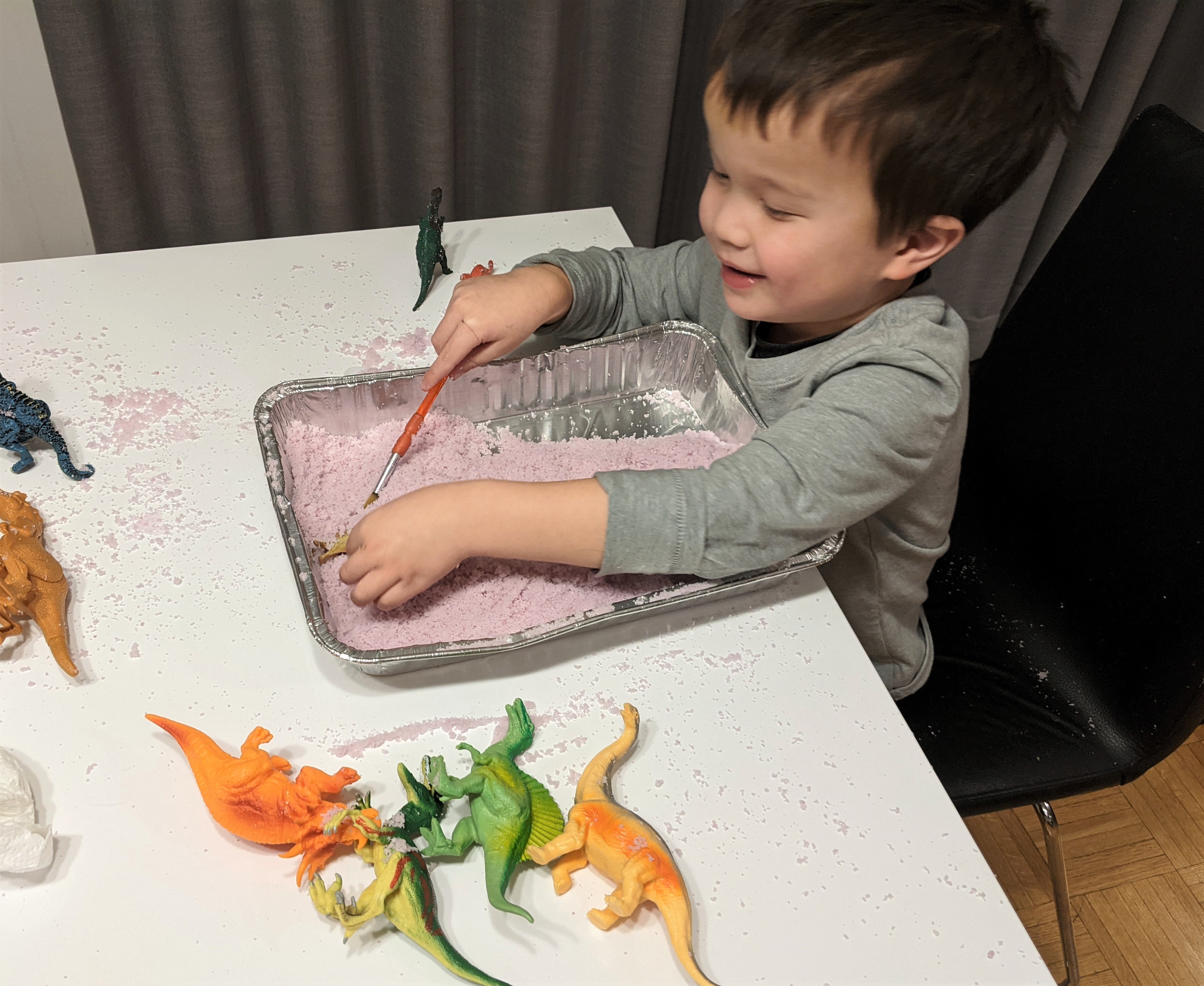Brief
Partnering With Our Food Pantry to Distribute At-Home STEM Kits
In Teaching With Poverty in Mind, Eric Jensen shares that some policies that have an impact on students raised in poverty are ones that support the whole child and have an enrichment mindset (2009). Supporting the whole child means addressing social, emotional, and health-related challenges that kids face every day. An enrichment-focused program “fosters intellectual curiosity, emotional engagement, and social bonding… and prepare [students] to succeed in life.” (p. 94)
One of the ways Parkway School District supports the whole child is by having its own food pantry, providing boxes of food for pickup every month to its students and employees. As an educator in the district, I work with the food pantry to include STEM kits with each family’s monthly food distribution. To accomplish this, district STEM coordinators meet with a food pantry volunteer (author) every other week to brainstorm activities, print, shop, order materials, and pack kits for distribution. These kits provide families an at-home interactive STEM experience. While fee-for-service STEM activities and subscriptions exist, distributing free kits through the food pantry increases accessibility.
At-Home STEM Kit Components
Our kits are made possible with federal Title IV funds, increasing access to STEM for underserved and at-risk student populations. We distribute 150 STEM kits per month, spending $10–15 per kit for materials.
Each STEM kit is centered on a theme and packed in a container (such as a bag, pan, box, etc.) with:
- A book for grades preK–5, including a bookmark with pre- and postreading questions, which helps increase family access to printed books.
- A one-page document summarizing the five to seven activities in the STEM kit, which is also linked on the district’s At-Home STEM website for all students to access.
- Materials, an instructional sheet, and extensions for each activity.
- One digital activity is often included. Parkway School District is one-to-one, with students bringing Chromebooks to and from home daily. The district also provides hotspots to those who qualify.
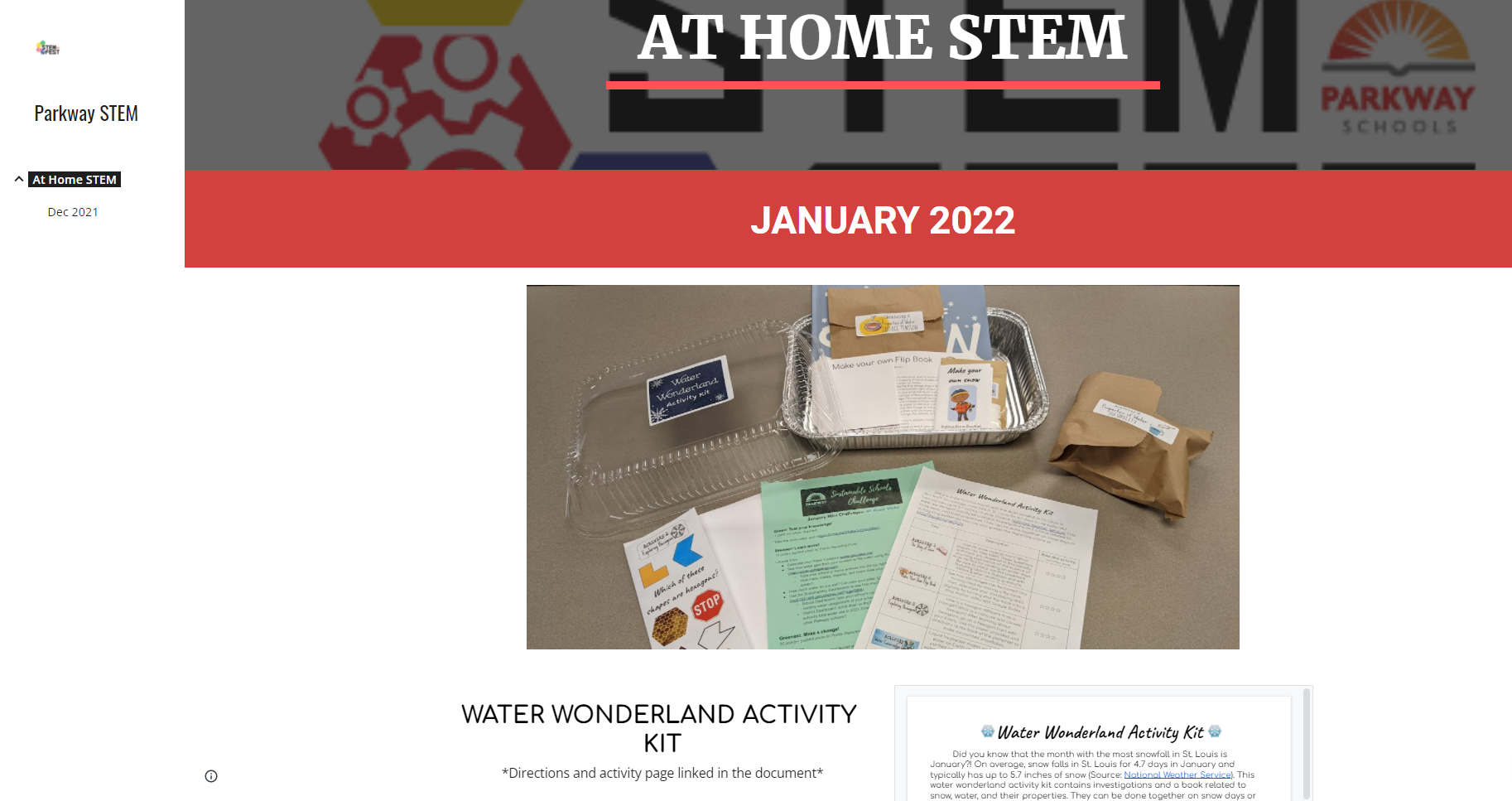
We distributed our first At-Home STEM kit in December 2021 to kick off Computer Science Week. In that kit, we provided:
- the illustrated book A Computer Called Katherine and accompanying bookmark;
- My Robotic Friends activity from code.org, where students can write a code for creating a cup stack, with cups provided;
- QR code links to Space Adventure Coding and Code Monkey Jr., which students can access using their district-issued Chromebooks;
- beads and pipe cleaners with instructions to make bracelets with their initials in binary code; and
- materials and instructions for making a simple pop-top rocket with a film canister purchased on Amazon, effervescent tablet, and water (obtained from home).
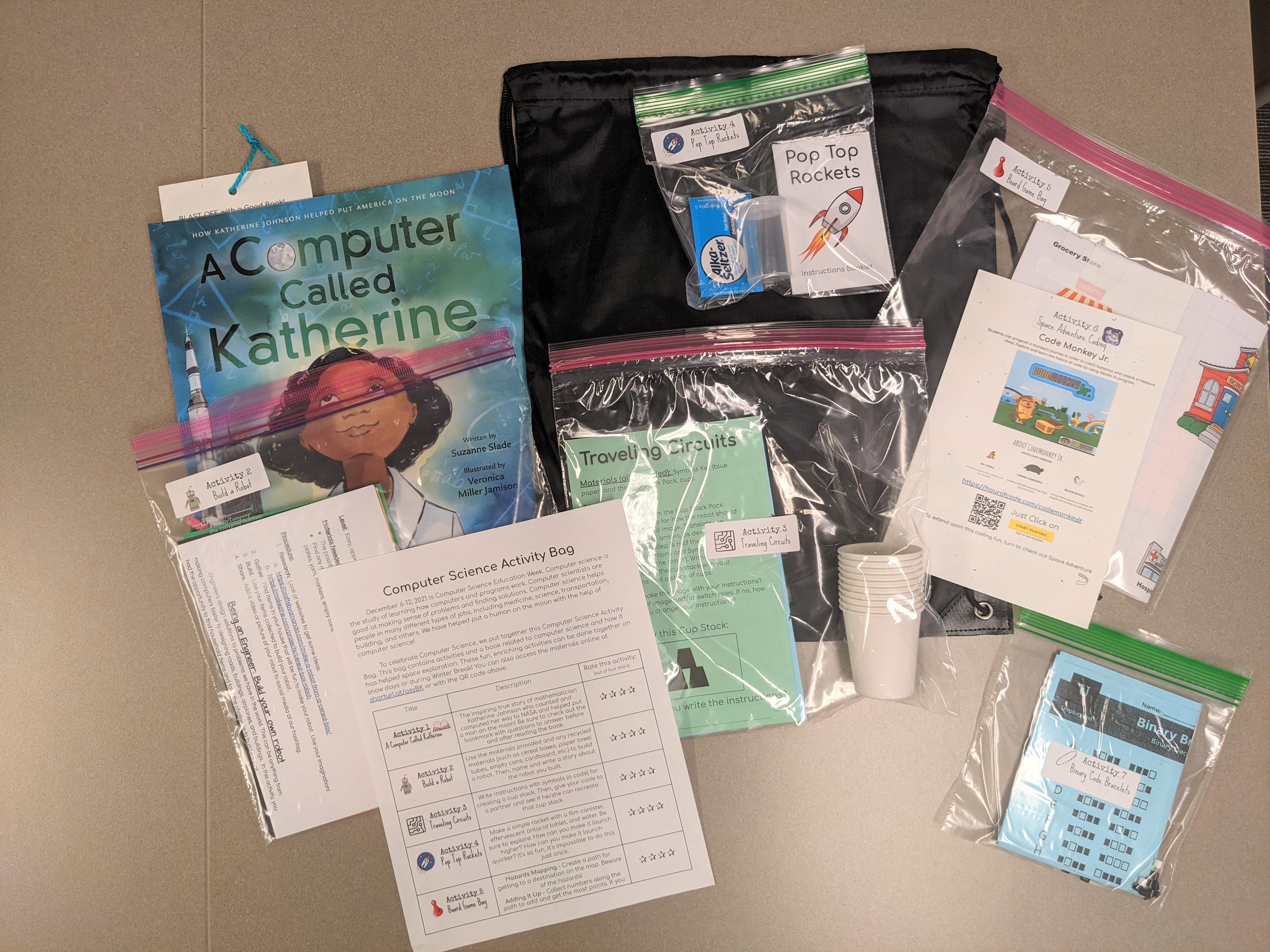
Since then, we have distributed a Water Wonderland STEM kit in January 2022, focusing on the amazing properties of snow and water, and Simply Amazing STEM in February 2022, highlighting how simple machines make work easier. McCarthy, a national construction company, sponsored the March 2022 At-Home STEM kit – March Into Engineering.
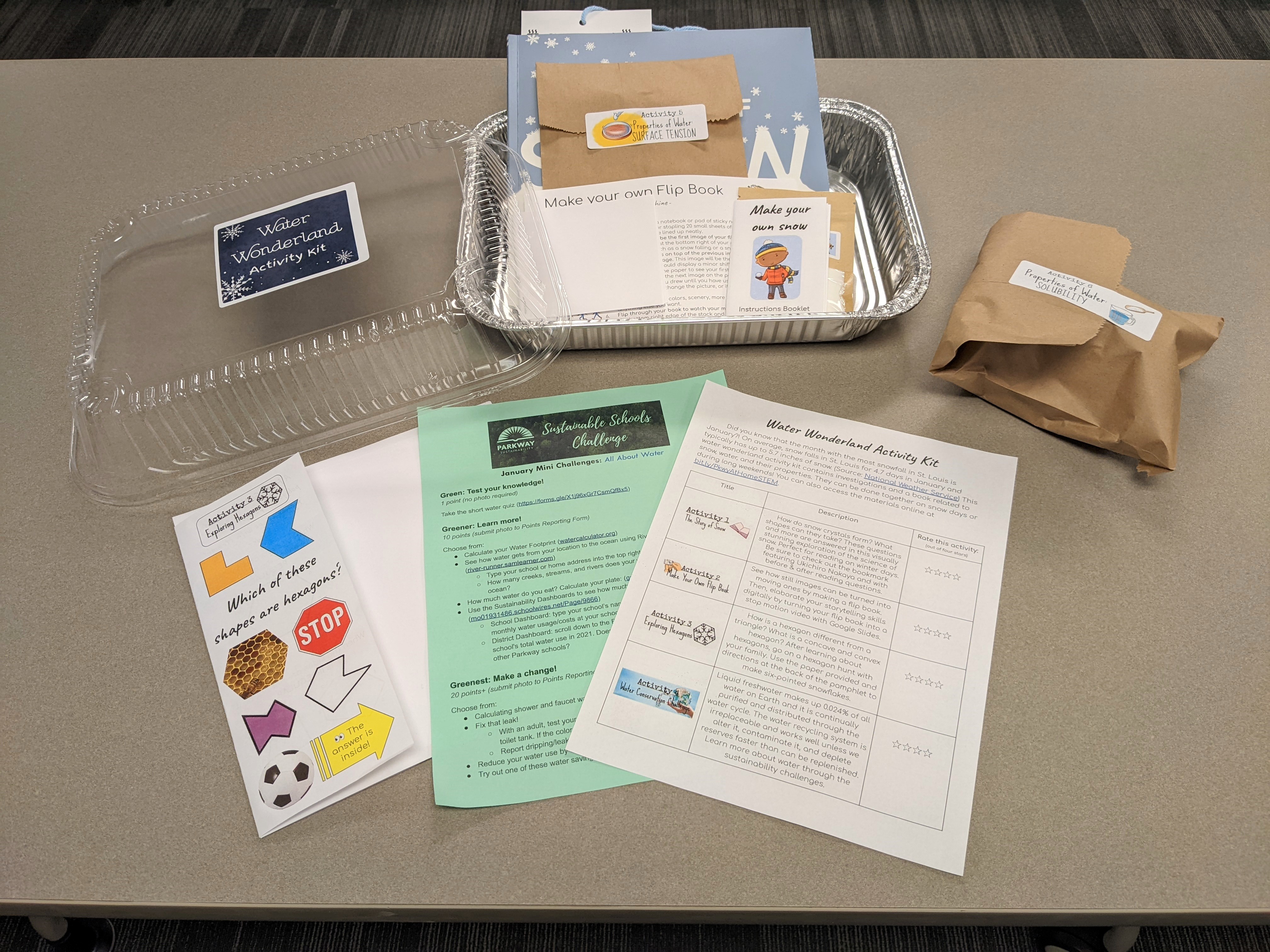
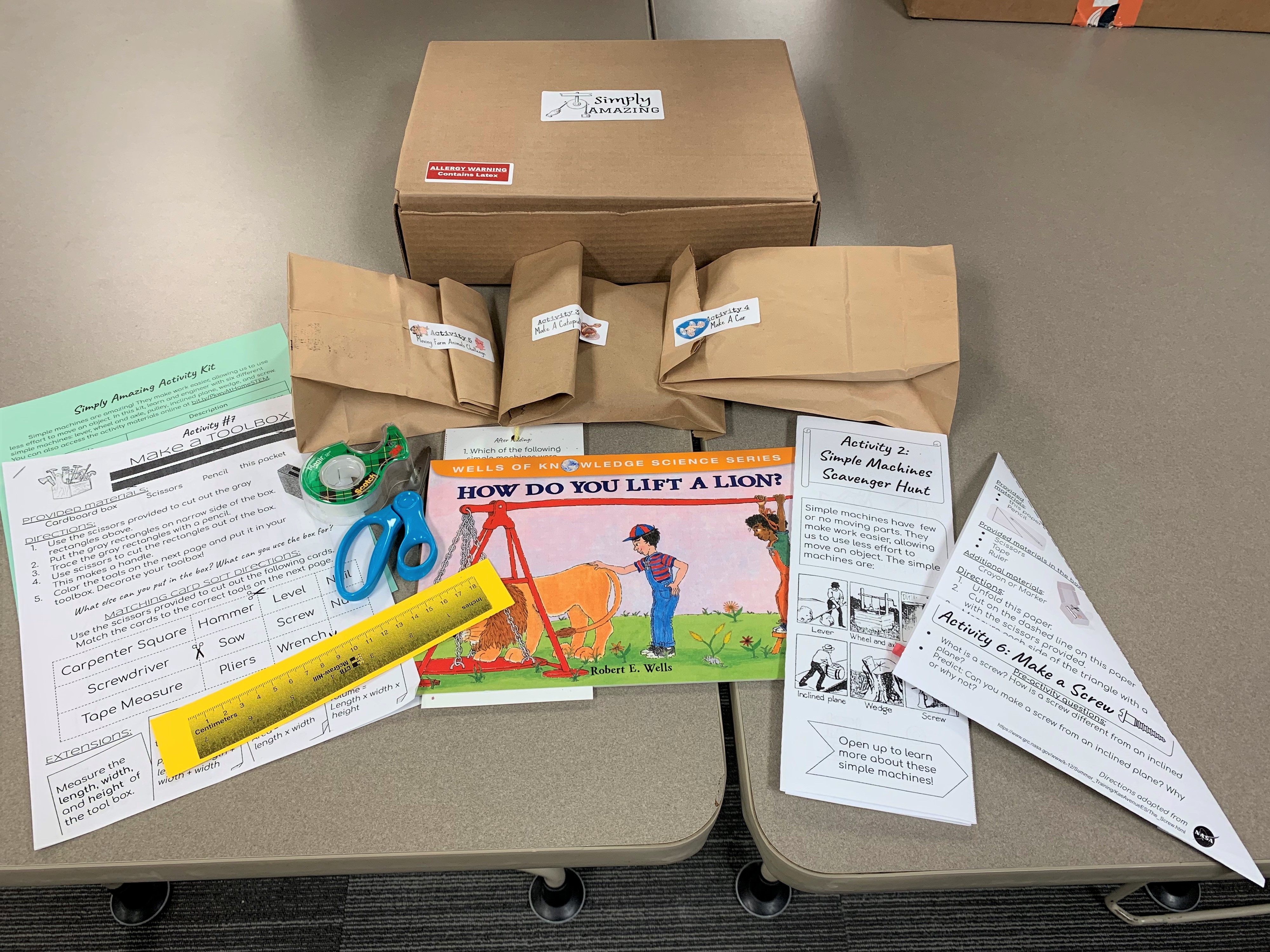
Measuring the Impact of the Kits
To protect the privacy of families, food pantry workers—as opposed to kit designers—distribute STEM kits. Food pantry workers report that kits are well-received, based on conversations with families at food pickup. Parents and children are excited and grateful for the materials and activities, especially over longer school breaks.
Each monthly At-Home STEM kit includes a paper survey and QR code for an electronic version. To date, survey participation has been very low. However, those who did respond noted that they participated in activities that are hands-on. We are simplifying questions and the process to hopefully increase the response rate. Later this school year, the food pantry will distribute an impact survey to families that will include questions about STEM kits.
Applying Design Thinking With Empathy
Currently, we are launching a new initiative for high school classes and student organizations within the district to design STEM kits. This summer, we plan to hold design thinking workshops for teachers interested in involving high school students in this service project. Participating teachers will practice designing activities for STEM kits to prepare them to replicate this experience with students during the school year.
It’s your turn!
If you’re interested in this idea, consider starting small—reach out to your local Food Pantry, such as Circle of Concern in your city or other social service organizations. For example, we’ve met a philanthropic teacher who purchases STEM boxes from Codebreak and distributes them to middle-school patients at our local Children’s Hospital. Who in your community has a desire for STEM experiences at home? How can you reach them? The possibilities are endless.
Elegan Kramer (ekramer@parkwayschools.net) is currently a Distance Learning Developer at Parkway School District in Chesterfield, Missouri.
citation: Kramer, E. 2022. Partnering with our food pantry to distribute at-home STEM kits. Connected Science Learning 4 (4). https://www.nsta.org/connected-science-learning/connected-science-learning-july-august-2022/partnering-our-food-pantry
Equity Instructional Materials Interdisciplinary Literacy STEM Informal Education



